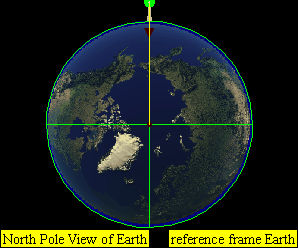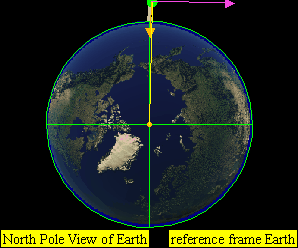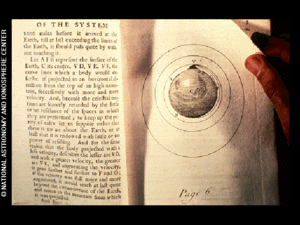Newton's cannonball

Newton's cannonball was a thought experiment Isaac Newton used to hypothesize that the force of gravity was universal, and it was the key force for planetary motion. It appeared in his book A Treatise of the System of the World.[1]
Thought experiment
In this experiment from his book (p. 5-8),[1] Newton visualizes a cannon on top of a very high mountain. If there were no forces of gravitation or air resistance, the cannonball should follow a straight line away from Earth, in the direction that it was fired. If a gravitational force acts on the cannonball, it will follow a different path depending on its initial velocity. If the speed is low, it will simply fall back on Earth. (A and B) for example horizontal speed of 0 to 7,000 m/s for Earth.


If the speed is the orbital speed at that altitude, it will go on circling around the Earth along a fixed circular orbit, just like the Moon. (C) for example horizontal speed of at approximately 7,300 m/s for Earth.

If the speed is higher than the orbital velocity, but not high enough to leave Earth altogether (lower than the escape velocity), it will continue revolving around Earth along an elliptical orbit. (D) for example horizontal speed of 7,300 to approximately 10,000 m/s for Earth.

If the speed is very high, it will leave Earth in a parabolic (at exactly escape velocity) or hyperbolic trajectory. (E) for example horizontal speed of approximately greater than 10,000 m/s for Earth.

Other appearances
An image of the page from the System of the World showing Newton's diagram of this experiment was included on the Voyager Golden Record[2] (image #111).

See also
Notes
- 1 2 Newton, Sir Isaac (1728). A Treatise of the System of the World. London: F. Fayram. Retrieved 2 June 2014.
- ↑ Sagan, Carl et al. (1978) Murmurs of Earth: The Voyager Interstellar Record. New York: Random House. ISBN 0-394-41047-5 (hardcover), ISBN 0-345-28396-1 (paperback)
External links
- Newton Thought Experiment Simulator
- Bucknell.edu – Astronomy 101 Specials: Newton's Cannonball and the Speed of Orbiting Objects
- Drawing in the 1731 (2nd) edition of 'A Treatise of the System of the World' @ Google books
- Newton's Cannon animation